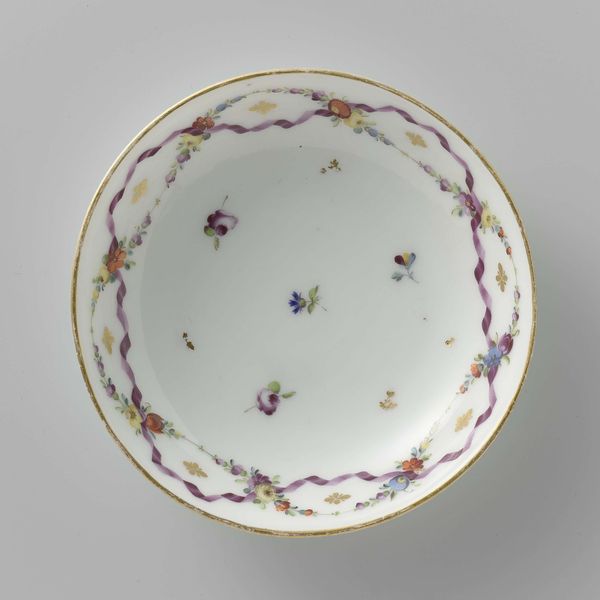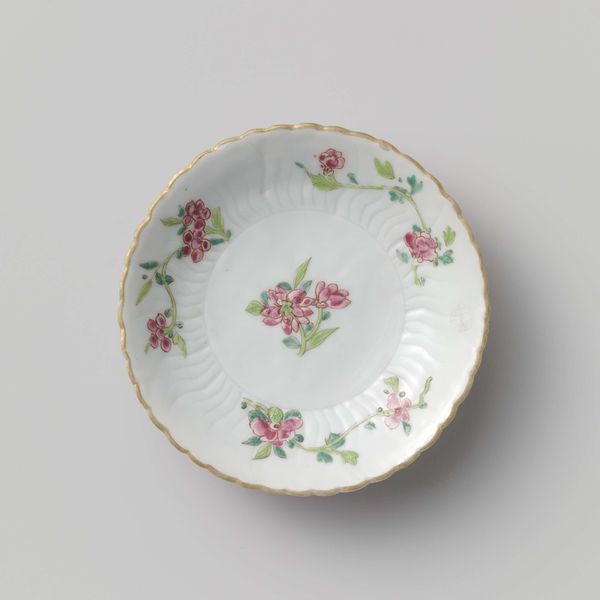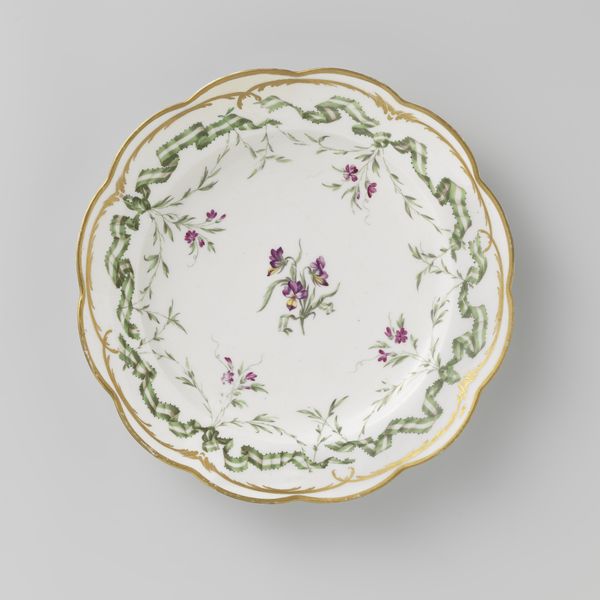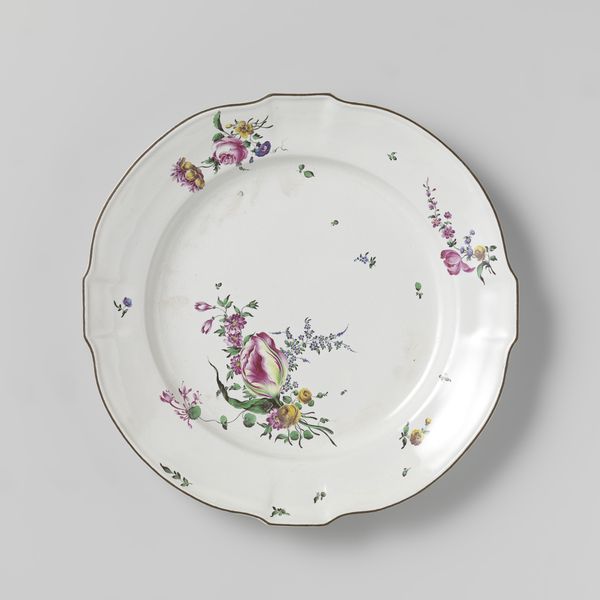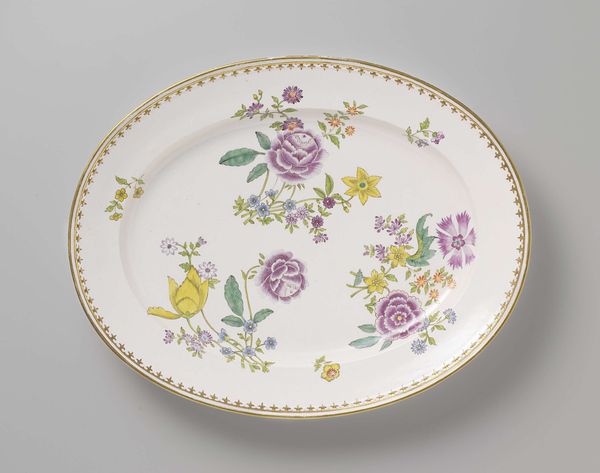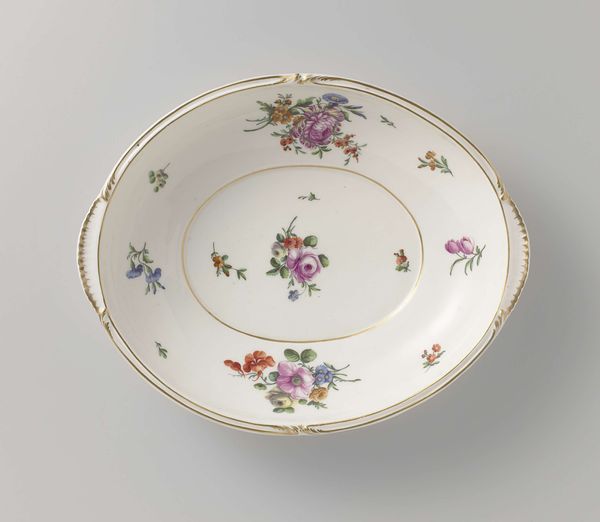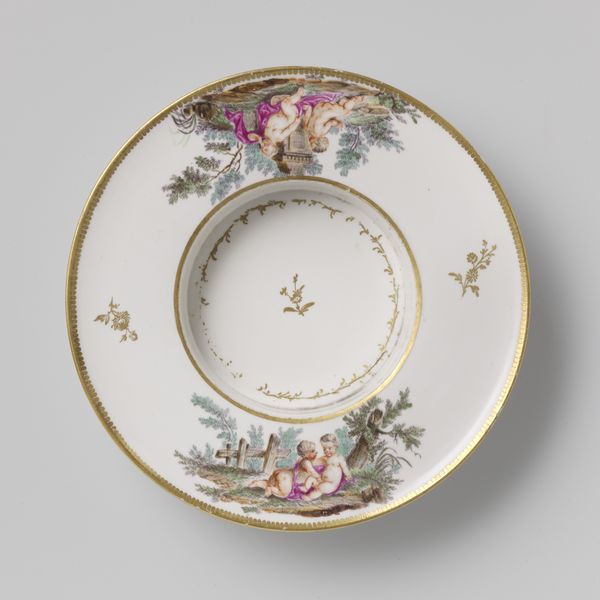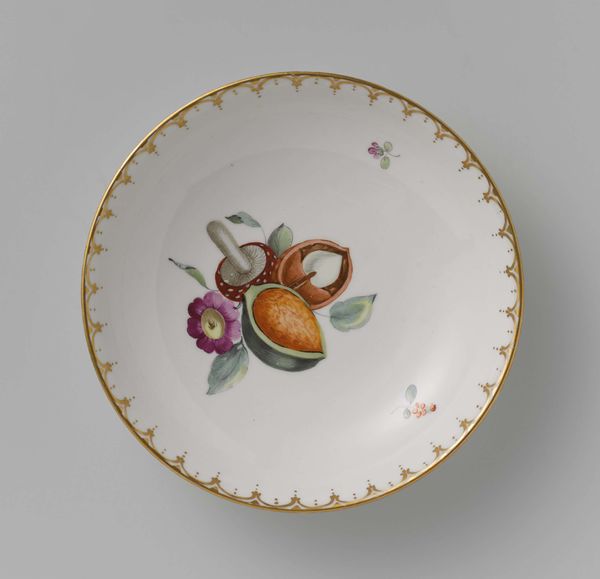
Dimensions: height 3.1 cm, diameter 12.7 cm, diameter 7.9 cm
Copyright: Rijks Museum: Open Domain
This saucer with grapevines was made by the Königliche Porzellan Manufaktur, likely in Germany. It is a delicate object whose history is interwoven with European royalty and the emergence of porcelain as a highly prized material. Porcelain was a luxury item, seen as a status symbol for the elite, and its production was often linked to royal patronage. In Germany, the establishment of porcelain factories was directly tied to the ambitions of monarchs seeking to emulate the splendor of other European courts. The grapevines depicted around the edge serve as a reminder of the importance of wine in elite culture. Were these grapes specifically chosen for their symbolic associations with wealth and extravagance? Or were the grapes used to convey the message that the owner of the porcelain was a supporter of new and natural forms of industry? By examining historical records, letters, and business documents related to the Königliche Porzellan Manufaktur, it's possible to understand the economic conditions that shaped the creation and meaning of this piece. The history of art is, after all, contingent on social and institutional contexts.
Comments
No comments
Be the first to comment and join the conversation on the ultimate creative platform.
